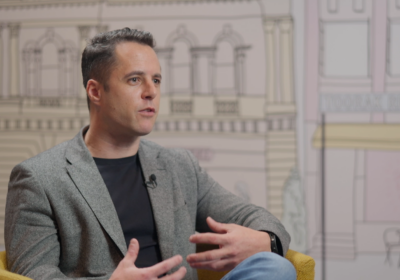A conference full of web developers is not the natural environment for marketers to pick up lessons that can aid in building engaging user experiences or relevant consumer content, but when it comes to building collaborative teams, managing agile processes and digital transformation, the techies are on to something. Listening to the keynotes and breakouts during a recent Amazon Web Services Global Summit, marketing professionals could have picked up a few useful tips.
Beyond the jargon and the discussion on serverless architecture and streaming algorithms, a number of web development lessons from the summit could be easily applied to the creative process in marketing:
Don’t design a product: Whether you are creating for a customer or a process for internal stakeholders, the creative process has to stand on its head, said AWS enterprise strategist Mark Schwartz. He noted that Amazon begins each product launch by writing a press release announcing the product, including making up quotes with user reaction to gauge what it wants to achieve; it also writes an FAQ and manual before starting development.

“A kind of humility” is at the core of this thinking, said Schwartz. The developers need to understand what problem they need to solve for and first gain empathy: “This is a process of understanding what the customer is trying to do.”
People need to be debugged too: Culture is often the biggest hurdle to any innovation, said many of the speakers at the Summit. Any change or new procedure can be a threat to someone’s position, so the human software needs to be addressed early and often.
The people element is often the most important, yet overlooked part of a digital transformation, said Pravin Raj, Global Head of Practice Development and Advisory Services at AWS: “You should expect resistance. It’s human.”
To lead a change, first acknowledge it, said Raj. “Be prepared for the rollercoaster all year,” he said, comparing the adoption cycle to the five stages of grief. Until all members of the team know their roles, they will be in denial and their leaders will need to help them understand; as they adapt, they will experience frustration, and the leaders should respond by “overcommunicating” and when they accept the changes, they will begin experimenting and testing new features.
To encourage experimentation, Raj suggested setting put “sandbox accounts” that will be fenced out of the public systems so the staffers can try things safely “to find their sea legs,” he said. But Raj also warned against eliminating them once the transition is over; new employees will need to be brought up to speed and others may want to brush up on skills. “This is not a one-time thing.”
You only need two pizzas: Developing products or solving problems shouldn’t take a cast of thousands. Rather than throw people at a problem, a small team drawn from different disciplines can work more effectively, said several speakers. Both Raj and Schwartz invoked a principle set by Amazon founder Jeff Bezos: The ideal development team should be just big enough that all its members can be fed with two large pizzas.
The teams should be cross-functional and combine novices and experts, so each member can bring a different perspective, Raj said. In a small team, “no one can hide,” and all members have to contribute, he said. Schwartz also noted handoffs are also faster in a small team, so the workflow is more agile.

It’s about the data: All the technical tools are only useful if they can be applied to the real world, said many of the speakers, and the key to making those use cases is data.
Nearly every major organization—tens of thousands of companies—are now using machine learning to sort out data in order to make better uses of it, noted Matt Wood, general manager, deep learning and AI at AWS. The National Football League is using machine learning to review statistics to understand how players interact, the pharmaceutical company Celgene to predict the toxicity of cancer drugs and “every single swipe and every tingle connection at Tinder, is driven under the hood by a machine learning model,” he said.
“We’re plugged into this fire hose of innovation when new services can be applied at the flip of the switch or the click of a mouse,” said Paul Cheesebrough, Chief Technology Officer of 21St Century Fox.
Fox is using data to make better decisions on where to place advertising where it will be seen, but also where it won’t interrupt the user experience, he said. Additionally, the company is using data to personalize the features and functions it offers consumers, and to rethink the creative process of how to make and market TV and films, Cheesebrough said: “You could say we’ve moved from looking in the rear-view mirror to looking forward and around corners.”





Join the conversation